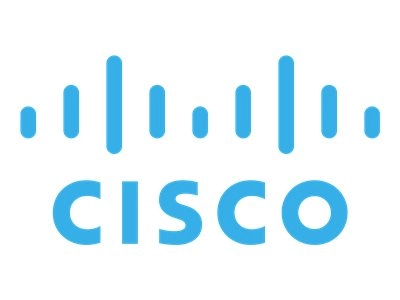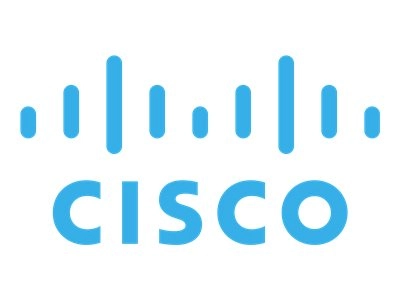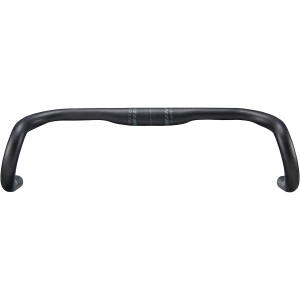Product Details
+
Cisco Unified Contact Center Enterprise and Hosted - (v. 10.0) - media
Cisco Unified Contact Center Enterprise segments customers, monitors resource availability, and delivers each contact to the most appropriate resource in the enterprise. The software profiles each customer contact using related data such as dialed number and calling line ID, caller-entered digits, data submitted on a web form, and information obtained from a customer database lookup. Simultaneously, the system monitors the resources available in the contact center to meet customer needs, including agent skills and availability, interactive-voice-response (IVR) status, and queue lengths.
This combination of customer and contact center data is processed through user-defined routing scripts that graphically reflect your company's business rules, enabling Cisco Unified Contact Center Enterprise to route each contact to the right place. Wherever an agent is based, the system delivers a rich set of call-event and customer-provided data to the targeted desktop as a contact arrives, personalizing service and increasing efficiency. Throughout the process, distributed fault tolerance helps ensure uninterrupted operation.
- Routing functions
The routing functions of Cisco Unified Contact Center Enterprise provide the intelligent distribution of contacts as they enter the company's network. When a contact requires redirection, Cisco Unified Contact Center Enterprise applies business logic, sending the contact to the best available enterprise resource. For contacts flowing between sites or among agents, skill groups, or IVRs, the routing optimizes each customer's interaction by retaining collected data, eliminating the need for the customer to restate information. - Customer profile routing
Cisco Unified Contact Center Enterprise extends the sources of data available for making contact routing decisions and for populating agent desktop applications. For instance, Cisco Unified Contact Center Enterprise can perform a lookup in your customer database during routing to guide its decisions. You can also use information from customer relationship management (CRM) applications to match customers with agents and expand the data available to screen pop applications. - Cisco Agent Desktop and Cisco Unified Presence integration
Integration of Cisco Agent Desktop with Cisco Unified Presence extends real-time collaboration into the broader enterprise by integrating the contact center desktop applications with Cisco Unified Presence. Through this integration, agents and supervisors can collaborate with relevant colleagues and subject matter experts outside the contact center. For efficiency and convenience, the contact center defines the view to show only those colleagues who are appropriate for agents to access. - Cisco Unified Web Interaction Manager
Cisco Unified Web Interaction Manager can help your contact center agents respond immediately to customer questions, using your website along with text chat or real-time web collaboration. Web collaboration allows contact center agents and customers to share webpages and collaboratively complete online forms. Cisco Unified Intelligent Contact Management Enterprise routes customer requests from your website using the same routing logic used for voice calls. Its reporting function also provides contact center statistics on all interactions, regardless of the communication channel used. Because it facilitates effective, personalized customer assistance, Cisco Unified Web Interaction Manager is suitable for both sales- and service-oriented contact centers. - Cisco Unified E-Mail Interaction Manager
Cisco Unified E-Mail Interaction Manager is a comprehensive solution for managing large volumes of customer email inquiries submitted to your company mailboxes or website. Based on customizable business rules, Cisco Unified E-Mail Interaction Manager accelerates the response process by automatically directing messages to the right agent or support team, categorizing and prioritizing messages, suggesting relevant response templates, and, if desired, sending automated replies. Quick, accurate turnaround of inquiries helps build stronger customer relationships, added value, and greater efficiency in the contact center. - Customer Relationship Management (CRM) integration
Your company can save costs, improve efficiency, and increase revenue by using Cisco Unified CRM Connector to integrate your third-party CRM applications with Cisco Unified Contact Center solutions. This integration allows the agent to use the third-party CRM user interface as the sole interface to manage customer interactions. The agent can log in, control agent state, and conduct calls through the CRM user interface. When a new call arrives, a screen pop of CRM information instantly appears on the agent's terminal and the agent can retrieve CRM information by phone number, IVR information, or information the agent enters. Calls can be routed, connected to a conference, or transferred from within the CRM screen. Incoming and outgoing call activity is logged here as well. - Universal queue
Cisco Unified Contact Center Enterprise coordinates an agent's ability to work on multiple tasks from various channels while allowing the agent to be interrupted with high-priority tasks as required. For instance, an agent who is assisting a customer using text chat could handle another text chat request at the same time, increasing the agent's productivity. Agents also can be delivered a task of a different channel type from their active task. - Remote agent and mobile agent support
Remote agent support extends the Cisco Unified Contact Center Enterprise environment by providing CTI, contact distribution, and reporting capabilities to remote agents in branch offices or at home. Cisco Unified Contact Center Enterprise provides identical user interfaces and feature functions to agents regardless of location. - Supervisory features
Cisco Unified Contact Center Enterprise allows supervisors to view agent states and call information, send text chat messages to agents, interrupt or intercept calls, record conversations, and silently monitor agent calls from the corporate network or through a remote dial-in connection. These features add value to the supervisors' role in the contact center and help them effectively manage their teams. - Reporting
The Cisco Unified Contact Center Enterprise solution provides real-time and historical data necessary for mission-critical contact center reporting. The reporting function provides accurate and timely reports on contact center activity, helping managers make informed decisions regarding staffing levels, contact handling procedures, and technology investments. Standard reporting templates provide automatically operational functions for common reporting needs. Custom reports can extend the standard reporting package to meet specific reporting needs. Furthermore, the open software architecture of Cisco Unified Contact Center Enterprise allows for export of reporting data to external data warehouse environments. - Management Portal
The Cisco Unified Contact Center Management Portal provides a simple-to-use web-based user interface to streamline the day-to-day provisioning and configuration operations performed by contact center managers, team leads, or administrators - such as moves, adds, or modifications of phones, agents, skill groups, teams, and other common contact center administrative functions. Its unified configuration is designed to simplify administration of both the applicable IP-based contact center elements and the Cisco Unified Communications Manager components. The Cisco Unified Contact Center Management Portal is a partitioned system that can support multiple business units with complete autonomy and offers hierarchical administration to support multiple business-level users with specific roles and responsibilities. - Scalability
Cisco Unified Contact Center Enterprise scales from small, single-site deployments of tens of agents up to large, distributed deployments that support thousands. Because the Cisco Unified Contact Center Enterprise architecture is software-based, the system scales easily without causing obsolescence of any components. Cisco Unified Contact Center Enterprise is designed to accommodate changing contact center environments.
Cisco Unified Contact Center Enterprise segments customers, monitors resource availability, and delivers each contact to the most appropriate resource in the enterprise. The software profiles each customer contact using related data such as dialed number and calling line ID, caller-entered digits, data submitted on a web form, and information obtained from a customer database lookup. Simultaneously, the system monitors the resources available in the contact center to meet customer needs, including agent skills and availability, interactive-voice-response (IVR) status, and queue lengths.
This combination of customer and contact center data is processed through user-defined routing scripts that graphically reflect your company's business rules, enabling Cisco Unified Contact Center Enterprise to route each contact to the right place. Wherever an agent is based, the system delivers a rich set of call-event and customer-provided data to the targeted desktop as a contact arrives, personalizing service and increasing efficiency. Throughout the process, distributed fault tolerance helps ensure uninterrupted operation.
- Routing functions
- Customer profile routing
- Cisco Unified Expert Advisor
- Cisco Agent Desktop and Cisco Unified Presence integration
- Cisco Unified Web Interaction Manager
- Cisco Unified E-Mail Interaction Manager
- Cisco Agent Desktop Browser Edition
- Customer Relationship Management (CRM) integration
- Universal queue
- Remote agent and mobile agent support
- Supervisory features
- Management Portal
















